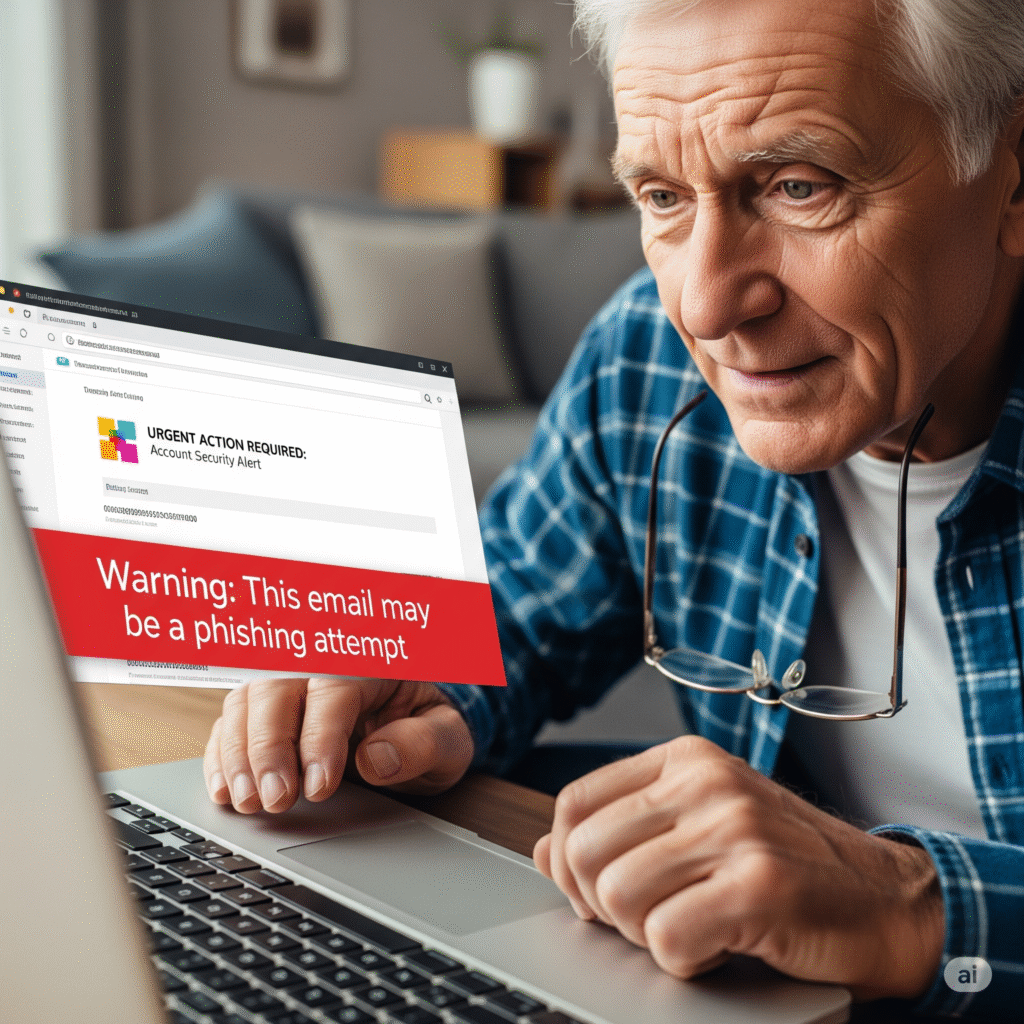Secure email for seniors sounds complicated but turns out it’s not that hard. Many older adults are new to the digital world, making them prime targets for phishing and email scams. This easy guide will help you—or your elderly loved ones—stay secure online with simple, effective email tips. Whether you’re setting it up for them or walking them through it, here’s how to keep their inbox safe and scam-free.
Why Secure Email Matters for Seniors
Email scams often target older adults because they’re seen as less tech-savvy. From fake bank alerts to “urgent” password reset requests, a confusing inbox can quickly lead to trouble.

Here’s what can go wrong:
- Clicking phishing links that steal passwords
- Falling for fake invoices or medical bills
- Responding to impersonated family members
A secure setup can prevent all of that.
Easy Steps to Set Up a Secure Email for Seniors
Here’s how to create a secure email account they can actually use:
1. Choose a Reliable Email Provider
Start with user-friendly services like:
- Gmail – clean interface, excellent spam filters
- ProtonMail – privacy-first, great for security
2. Create a Strong Password
Use a passphrase, not a password. Example:
GrandmaLikesBakingCookies2025!
Tip: Use a password manager like Bitwarden or 1Password to store it.
3. Enable Two-Factor Authentication (2FA)
Add an extra layer of security by requiring a code sent to their phone.
4. Set Up Spam Filters
Make sure scam emails never reach their inbox.
Common Scams Seniors Should Avoid
A password is considered strong if it follows certain guidelines that make it difficult to guess, crack, or brute force. Here are the key characteristics of a strong password:
- “You’ve won a prize!” — Classic bait.
- Fake bank emails — Always log in manually.
- “Urgent password reset” — Never click links from unexpected emails.
- Tech support scams — No real company asks for passwords by email.
Teach them to hover over links before clicking, and to check for spelling errors in email addresses.
Tips for Teaching to Secure Email for Seniors
You don’t need to be a tech genius. Just follow these:
- Use large fonts and clean layout email clients.
- Print out a 1-page cheat sheet:
- “Never click links you don’t recognize.”
- “Call me before replying to strange emails.”
- Keep things simple: no cluttered inbox, no dozens of folders.
Set a recurring reminder every 3 months to update their password together.
Final Thoughts: Secure Email For Seniors Is Matter
It only takes 15 minutes to set up a secure email for someone you care about. And it could save them from identity theft, scams, and a lot of frustration.
Want to go even further? Check out our guide:
👉 Google Workspace For Seniors : A Simple Introduction
